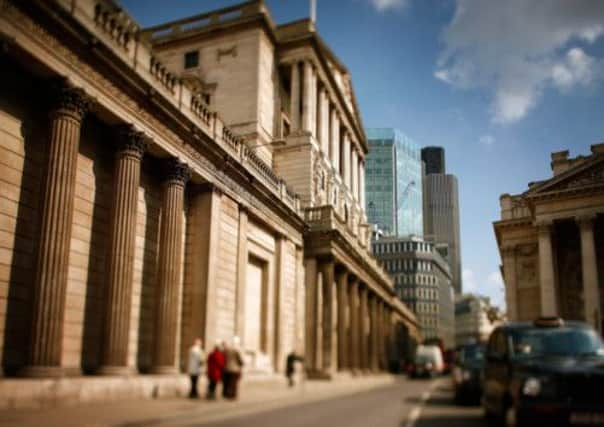Business lending hits record levels


The Bank of England yesterday said net lending by banks taking part in its Funding for Lending Scheme (FLS) more than trebled during the third quarter, while separate data showed the manufacturing sector was growing at its fastest rate in almost three years.
However, business leaders pointed out that lending to cash-strapped small firms continued to fall, ahead of a revamp unveiled by Bank governor Mark Carney last week, and the central bank admitted that the funding environment “remains muted”.
Advertisement
Hide AdAdvertisement
Hide AdJohn Longworth, director-general of the British Chambers of Commerce, described the overall rise in lending as “encouraging”, but said start-ups and high-growth companies “are still being left out in the cold when trying to access finance”.
Net lending by FLS participants rose by £5.8 billion in the three months to September, more than three times the £1.6bn seen in the previous quarter and the highest figure since the initiative was launched in July last year.
Paul Fisher, the Bank’s executive director for markets, said: “An economic recovery has taken hold. These data show that a significant improvement in credit conditions, aided by the FLS, is now feeding through to lending. But credit supply to businesses remains relatively subdued, especially to SMEs.”
Fisher said last week’s move to withdraw FLS support for the mortgage market, aimed at averting a house-price bubble, should help to stimulate lending to small companies.
However, Phil Orford, chief executive of the Forum of Private Business, said many small firms are still reluctant to borrow, despite the best efforts of the Bank of England and the Treasury.
He said: “Further action is still needed by the banks to convince the small business community that they are here to support firms looking to grow and employ. We hope that the recent incentives will also encourage the significant lenders failing to deliver full benefits of the scheme to boost lending.”
Yesterday’s figures showed the largest rise during the third quarter came from state-backed Lloyds Banking Group, which grew its net lending by £3.1bn, followed by £2.7bn at Nationwide Building Society.
However, net lending fell at Barclays, Clydesdale, the Co-operative Bank and Santander UK, which had the largest decline of £2.1bn in the quarter.
Advertisement
Hide AdAdvertisement
Hide AdThe overall upturn for the FLS came as the closely-watched Cips/Markit purchasing managers’ index (PMI) showed last month’s growth in the manufacturing sector was the fastest since February 2011.
Howard Archer, chief UK economist at IHS Global Insight, said that, if the results were followed by robust PMI data for the dominant services sector, UK economic growth in the final three months of the year could “at least match” the 0.8 per cent expansion seen in the third quarter.
The UK government launched the FLS as part of its efforts to lift the economy out of recession, and the central bank made cheap funds available to banks and building societies on the condition they lent to UK households and businesses.